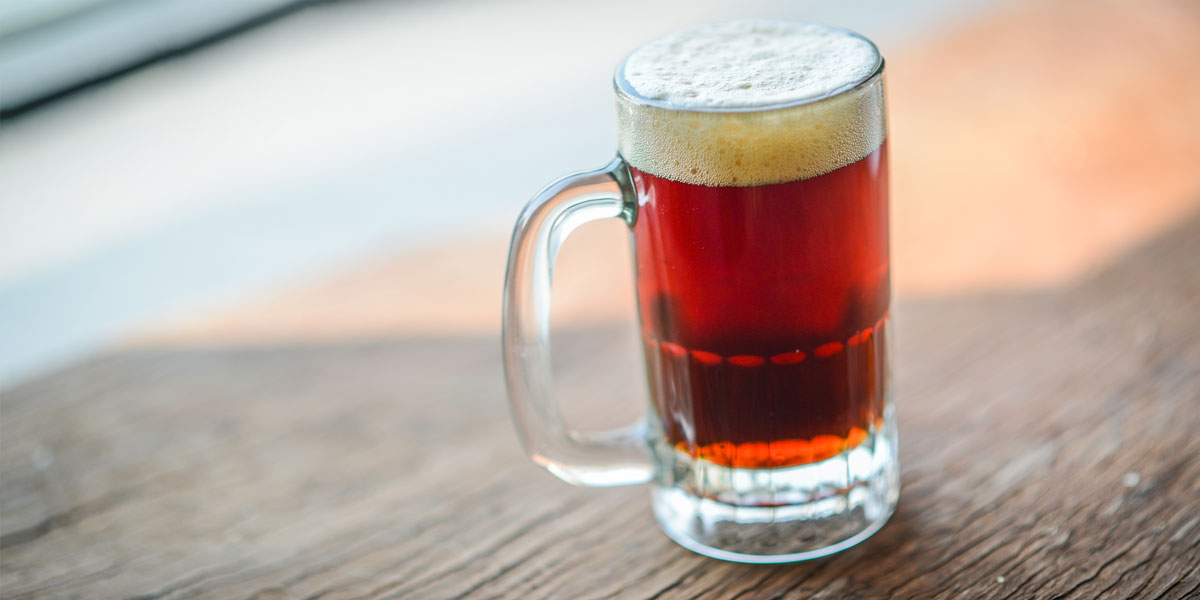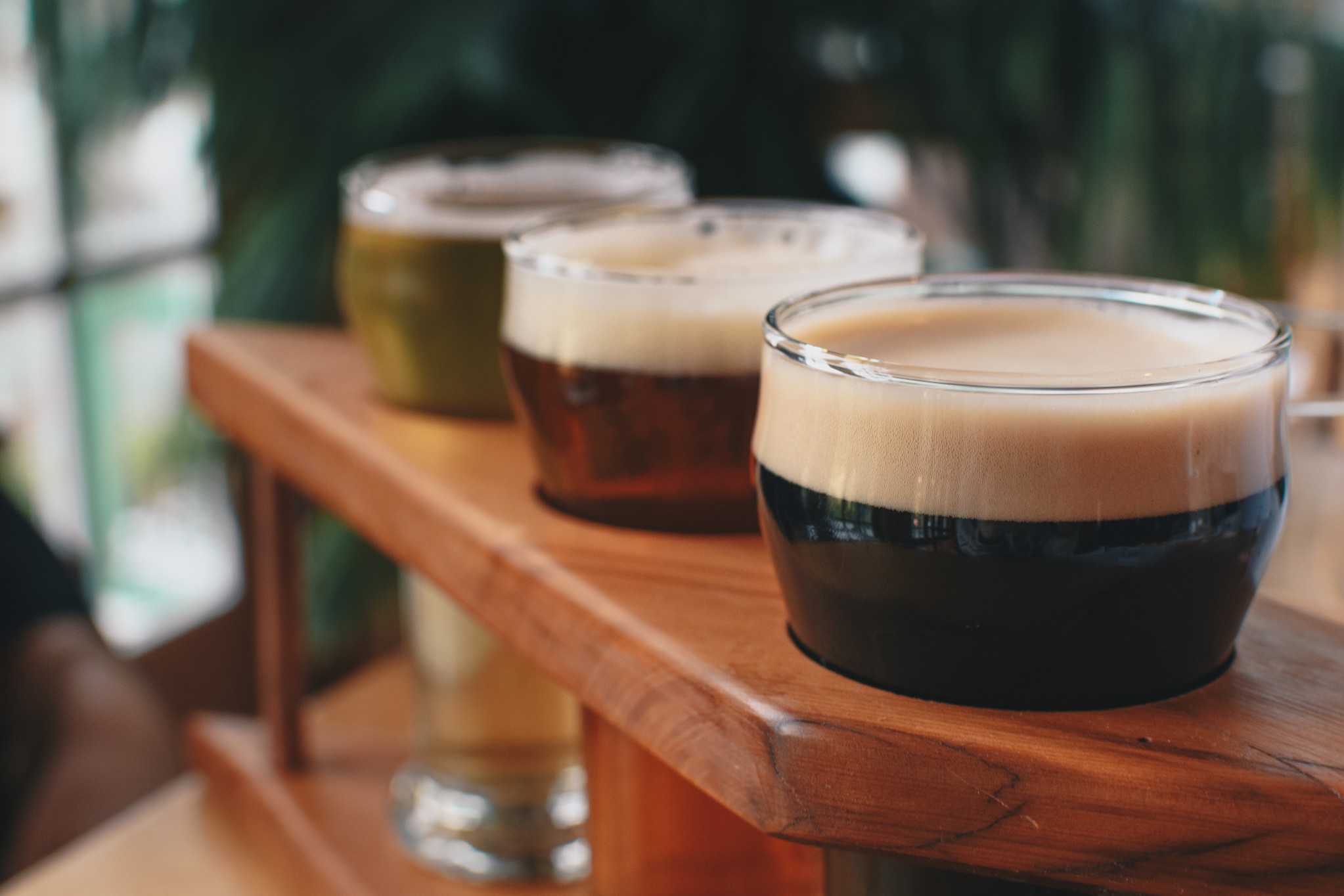Brown ales and stouts have nothing in common except for maybe a few flavors and tasting notes. But, all their different qualities give each a uniqueness, making them attractive beer options, even for those who don’t drink beer on a regular basis. Let’s get to know why these two differ, what their alcohol contents are, and why they are so popular the world over.
Table of Contents
ToggleOrigins of brown ale vs. stout
Brown ale has been around for a long time. First brewed in England in the late 1500s, the original drink used roasted barley and dark malts as its ingredients to give the beer a nutty flavor and a dark amber color. With time and experimenting, brewers came up with different recipes resulting in a whole variety of brown ales available in the market today.
Stouts were first brewed by Arthur Guinness, a brewer based in London, back in 1759. He used water, yeast, hops, black patent malt, and pale malt to make them. These ingredients give stouts a dark color and make them flavorful.
Craft brewers taking over
With the sudden domination of craft brewers, there is more experimentation, with each expert trying to perfect their beer recipes. Thanks to them, brewing technology has enhanced, and more and more ingredients, such as spices and fruits, are used to give these classic beers an original taste. In addition, barrel aging adds more richness in terms of flavor to stouts and brown ales.
Thus, you can now find both traditional and new versions of these beers in the market. An example is the traditional Guinness Extra Stout and the newer Imperial varieties that are aged in barrels and flavored with chocolate or coffee.
Brewing
Stouts and brown ales differ significantly in their brewing processes. Brown ales use pale malts and chocolate or crystal for flavor. The addition of hops helps balance out the sweetness of the malts. Sometimes, spices such as nutmeg and cinnamon are also added. Fermentation is slower as compared to other beers, which is great because it leads to a more tasty beer.
Stouts use dark-roasted malts, giving them a characteristic black color. For a coffee flavor, roasted barley can be used. The hops added to give the beer its bitterness and help to neutralize the sweetness from the malts.
Taste
Brown ales are malty beers and hence have a sweetness to them. In addition, they are light-bodied and nutty. An example of a must-try brown ale is Tumbler Autumn brown ale by Sierra Nevada.
Stouts have a darker color compared to brown ales with chocolate or coffee flavors. Guinness Draught stout is a famous drink world-over. Stouts also have an ABV than brown ales since they are aged longer during fermentation. Plus, lactose sugar and oats are sometimes added to stouts giving them more texture and flavor.
Some of the common flavors in both these beer types are nuts, caramelized sugars, earthiness from hops, and fruit esters, depending on the yeast used.
Color
Brown ales are lighter in color than stouts. They are light to medium brown, while stouts can be dark brown or black in color.
Alcohol
Brown ales have an alcohol content of between 4% to 6%. Stouts, on the other hand, have a higher ABV of around 5% to 8%.
Brown ale styles

English brown ale
There are two types of English brown ales, southern and northern, differentiated by their geographical location. The southern ones used to be sweet and dark and had gravities lower than their northern counterparts. Northern English brown ales were crisper and lighter in color, for example, New Castle brown ale. But now, you can’t really tell them apart. English brown ales have an IBU of 15 to 25 and an ABV of 3% to 7%. Their color is mostly copper to brown.
American brown ale
Ever since the rise in the craft brewing industry, lots of beer experiments have been happening. American brown ales are a result of the inspiration from English brown ales and experimentation. They can be sweet, soft, and dark or fizzy and bright and contain chocolate, caramel, and roasted malt flavors with an IBU of 25 to 45 and an ABV of 4.2% to 8.8%)
Nut brown ale
Brewers sometimes use adjuncts such as hazelnut or pecan to flavor their beers and make them nutty. This, combined with malts and hops, makes a flavorful and original beer.
Strong brown ale
This was introduced by the English but can now be found in Scandinavian and American breweries. Due to the intensity of hops, flavors, and alcohol, these beers are the darkest ales.
Stout styles
:max_bytes(150000):strip_icc()/stout-beer-blog1117-e4c0fa0d9d6b498e89e73484d623dac3.jpg)
Dry Irish stout
When you think of a Dry Irish stout, Guinness probably comes to mind. It’s not sweet and a little bitter since it uses unmalted and dry-roasted barley to give a rich taste, aroma, and dark color. Its ABV is under 5% in most cases, lower than other stouts.
Milk stout
These stouts have lactose or dairy sugar in them, producing a creamy and smooth beer that resembles a milkshake or chocolate milk. Milk stouts often have coffee, vanilla, coconut, or cacao flavors, making them delicious.
Oatmeal stout
Sometimes, oats are added to stouts to give them a smoothness and creaminess without a lot of sweetness. The finished product will have a mouthwatering oatmeal aroma.
Oyster stout
The name says it all. Actual oysters are used during the brewing process. This produces caramel-like notes due to a mixture of sea salt and other flavors.
Pastry stout
A pastry stout is a stout inspired by a cake or a cookie, giving it a yummy desert-like quality. These often have a higher ABV.
Coffee stout
Stouts and coffee is a match made in heaven. They just go perfectly together, and this is why you can find coffee stouts easily in the market. The bittersweet and chocolate-flavored coffee beans go well with a malty and dark stout.
Imperial stout
These have an ABV of around 8% or higher and are a mixture of sweet and coffee, dark chocolate, and roast flavors.

I am a passionate beer connoisseur with a deep appreciation for the art and science of brewing. With years of experience tasting and evaluating various beers, I love to share my opinions and insights with others and I am always eager to engage in lively discussions about my favorite beverage.
















